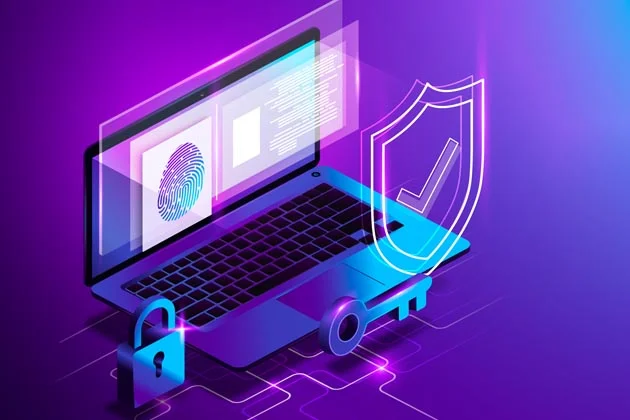By Casey McGuigan, Slingshot and Reveal Product Manager, Infragistics
While businesses increasingly embrace new opportunities offered by the world of data science and the interconnected network of IoT devices and systems, new opportunities arise for exploitation by cybercriminals as well. Our todays topic is about cyberattacks through data visualizations and how can you stay ahead from it.
And as cybersecurity becomes a growing concern for organizations, data visualization tools can help identify patterns to detect and prevent fraudulent behavior by examining all actions in real-time.
In the past, it was difficult to adequately predict, recognize and prevent any kind of fraudulent behavior due to the lack of data insights. Nowadays, however, there is plenty of information available at the organization’s fingertips.
The difficulty that remains is how to pave your way through the data in order to understand big, complex, high-velocity data, and respond to quickly-evolving threats from unpredictable sources.
And that is where data visualization – the process of translating raw data into a visual context that is easier for the human brain to understand – comes into play.
What Is Data Visualization in Security?
Data visualization is a data analytics technique used to engage the human brain into finding patterns in data. Therefore, in security, data visualization tools such as charts, graphs, tables, maps, dashboards, etc., provide an easy way for security professionals to view data from different sources and make it easier to spot anomalies and other unusual activities that might be a sign for a security breach.
Why Is Data Visualization Important in Security?
By some counts, there are more than 2,200 alerts raised for cyberattacks per day. That equates to about one cyberattack every 39 seconds!
Cybersecurity teams and security operation centers (SOCs) need to be aware of what is going on at all times so they can react in real-time in case of a threat. Visual interfaces, dashboards, and data visualization functionalities are essential components for such teams – providing them with a quick and comprehensive overview of the data. By monitoring all activities, security professionals and data analysts can see events unfold in the moment of impact and make quicker, smarter decisions.
Embedded analytics and traditional analytics platforms that deliver data visualization tools and dashboard creator capabilities are of vital importance for security as they reveal trends, patterns, outliers, and anomalies in data. That gives you peace of mind and assurance that things are running smoothly. And when they don’t, data visualizations give you an early warning of potential threats and attacks you might face, so you can take the necessary actions before any damage occurs. Because when there is a data breach or a potential security threat, time is of the essence. The longer a threat goes unnoticed, the greater the damage will be. Respectively, the faster you can recognize the problem, the better chance you have of preventing security incidents and containing issues before they spread and do damage to your systems and networks.
Another way in which data visualization tools help security is by sorting and organizing important data. Data is being gathered from logs, alerts, notifications, security software, etc., and as a result of getting data from so many various sources, it is likely that this data becomes cluttered and disorganized. With the help of data visualization tools, data is neatly organized and security teams can visualize insights in the way it makes the most sense to them. That reduces the risks of overlooking important information.
How Data Visualization Tools Can Quickly Detect and Prevent Cyber Attacks
The power of data visualization paired with predictive analytics and machine learning can identify potential security threats based on previous behavior patterns of exploits. Fraudulent behavior is one area of cybersecurity where these paired tools together can make a huge difference. Security professionals and data analysts can create regression models to monitor systems for potential attacks.
Here are some examples of industries where data visualization helps organizations stay ahead of cyberattacks and other security threats:
Banking – By monitoring customer spending patterns and identifying unusual behavior, banking analytics helps bank professionals understand when their customers’ accounts are under threat – that not only protects the bank’s customers, but also the bank itself.
Insurance – Based on applicant’s past behavior, insurance analytics help process any claim and detect if given trends in past frauds are repeating and therefore prevent them from occurring again.
IT – In the IT industry, providing a secure network is an area that is constantly evolving. By analyzing historical data and identifying unusual behavior, data visualization can alert administrators and managers that something is about to happen. When they are alerted on time, they can make the right decisions and prevent cyberattacks and other security breaches from happening.
Telecommunication – Network security is a huge concern for telecom companies for a reason. In 2015, Telco T-Mobile had confidential financial data of about 15 million from its US customers stolen from a server hosted by the information service Experian. Luckily, data visualization helps visualize and identify security threats, potential risks, and anomalies to find out where vulnerabilities exist so network security can be strengthened on time, eliminating the risk of cyberattacks.
The cybersecurity innovator Sensato embedded analytics into their system so clients could easily visualize massive amounts of data captured during a cyber-attack and make analytics and visualizations simple to use and easy to deploy across multiple platforms.
With the help of embedded analytics, organizations can make sense of the massive amounts of data and analyze it so that security experts can develop more sophisticated protection strategies. “Allowing a customer to visualize all of that information is crucial to understanding what occurred during the attack — or may still be occurring — and to allow our customers to harden their cyber-security emergency responses,” says John Gomez, CEO of Sensato. ‘’Our engineers didn’t need to become visualization experts, we didn’t need to do all the testing of the visualization platform and we didn’t need to think through how it will scale or worry about its reliability,’ adds Gomez.
Data visualization is one of the most powerful tools a security team can use to help make sense of data, yet many organizations still haven’t made the step forward. Without data analytics and data visualization tools, it wouldn’t be possible to gather and analyze every data point that could reveal a weak and vulnerable spot in your organization.
Analytics tools with embedded machine learning and AI capabilities allow organizations to stay ahead of cyberattacks by predicting, detecting, and containing threats before they do any major financial or reputational damage to your organization.
About the Author
Casey McGuigan holds a BA in mathematics and an MBA, bringing a data analytics and business perspective to Infragistics. Casey is the product owner for Slingshot, a digital workplace platform, and Reveal an embedded analytics solution. She was instrumental in product development, market analysis, and the products’ go-to-market strategy.











